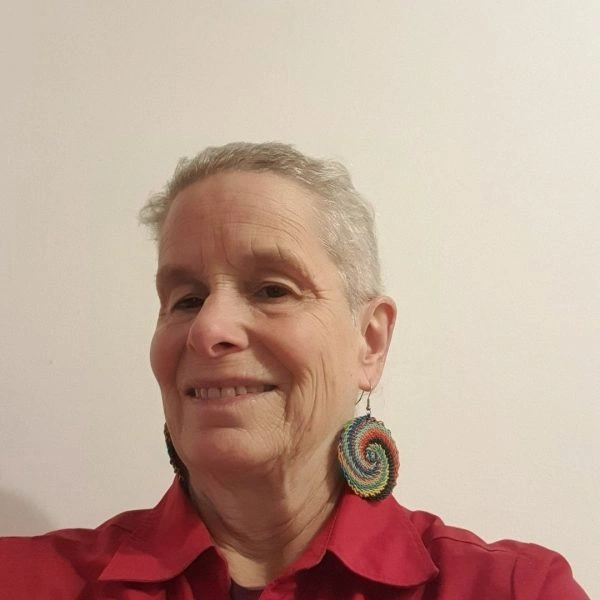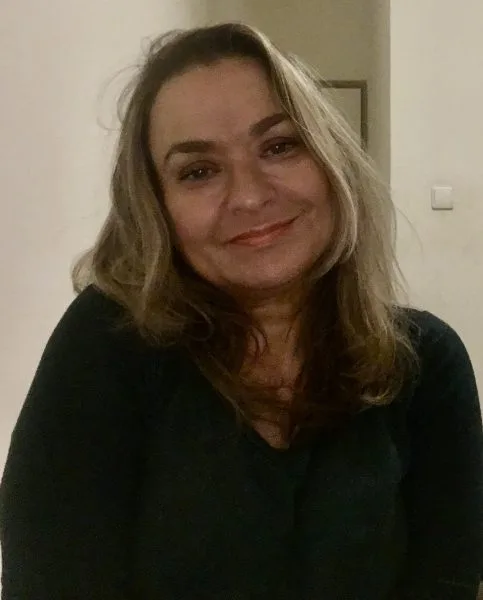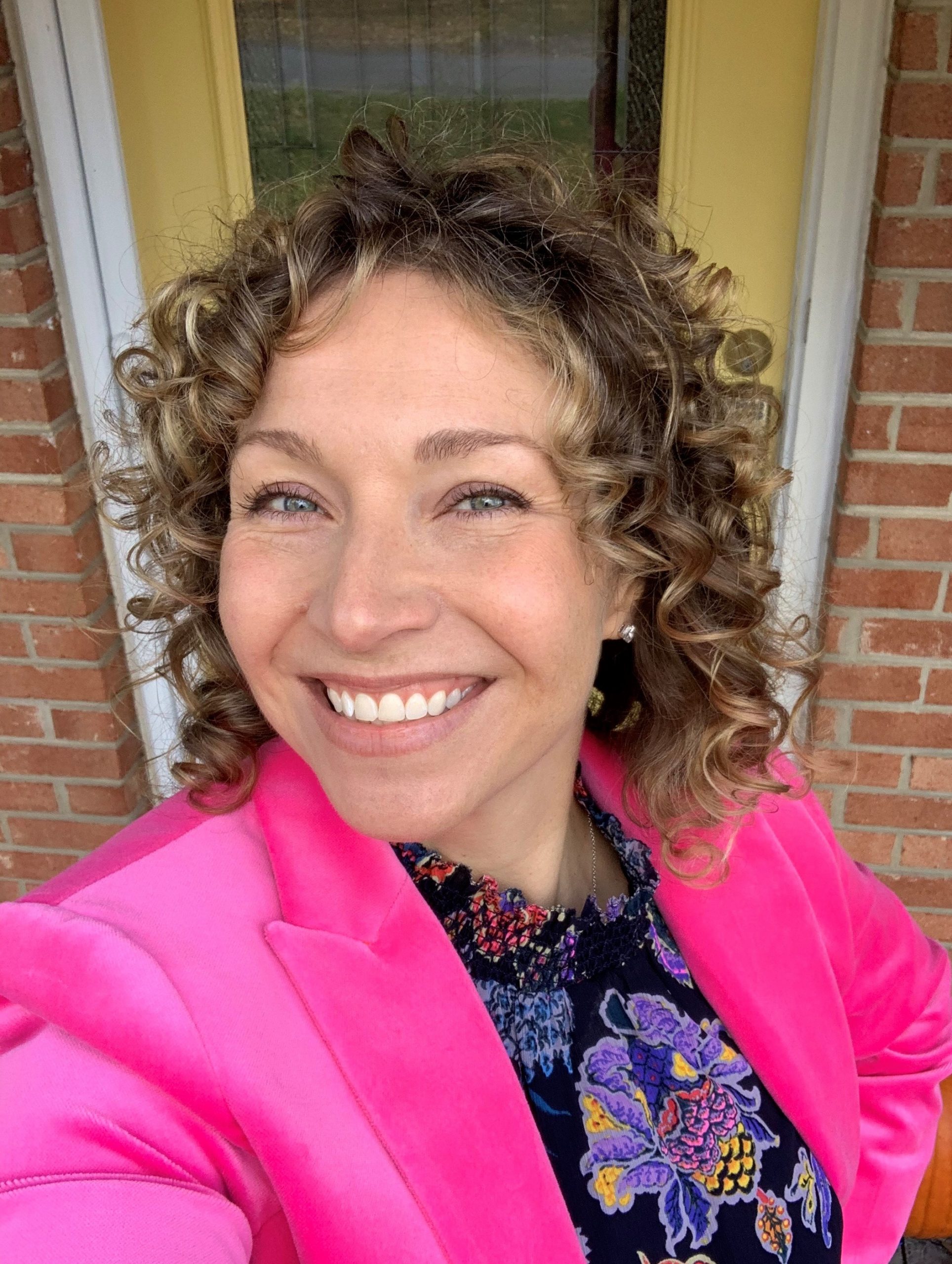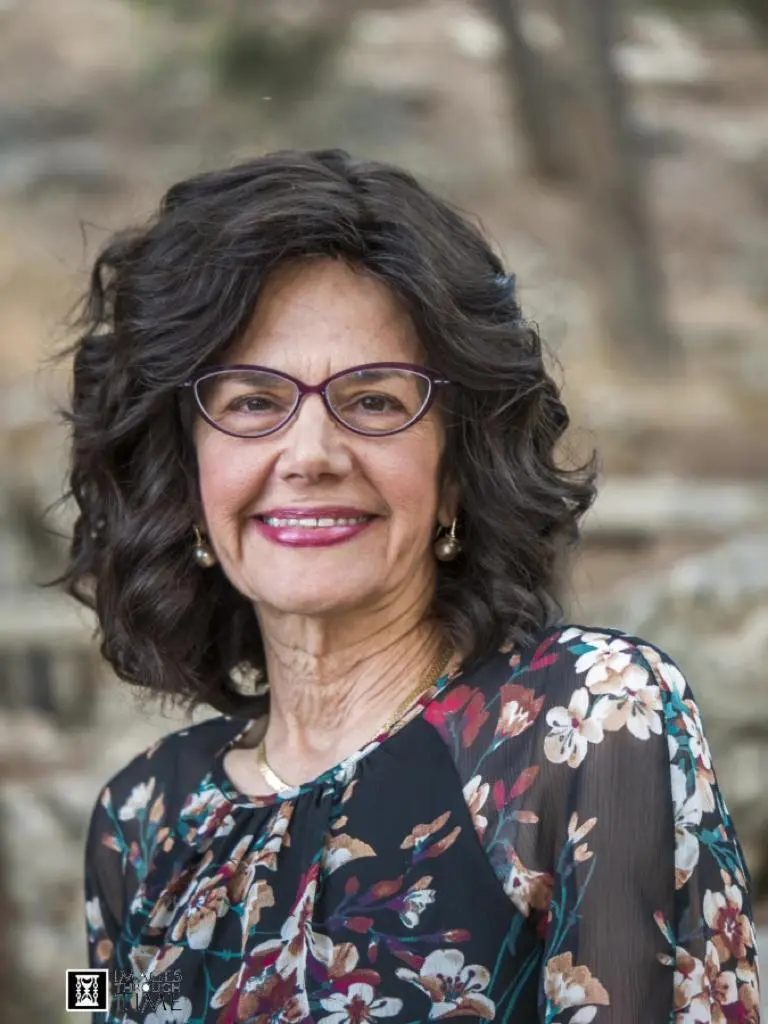Rav Ashi’s opinion about Rabbi Eliezer in the mishna in Parah didn’t make sense in light of our mishna and on account of that, Rava explains that our mishna is not referring to bloods mixed together in the same cup but cups of blood that got mixed up with each other and we don’t know which cup is from which type of sacrifice. There is a debate between emoraim about whether the remainder of the bloods need to be spilled into the flat part on the base of the altar or can it be spilled on the side of the altar? Several sources are brought as questions to one of the opinions.
Masechet Zevachim
Masechet Zevachim is sponsored by Esther Kremer in loving memory of her father, Manny Gross on his third yahrzeit. “He exemplified a path of holiness and purity, living with kedushah in his everyday life.”
Want to dedicate learning? Get started here:

Today’s daily daf tools:
Masechet Zevachim
Masechet Zevachim is sponsored by Esther Kremer in loving memory of her father, Manny Gross on his third yahrzeit. “He exemplified a path of holiness and purity, living with kedushah in his everyday life.”
Today’s daily daf tools:
Delve Deeper
Broaden your understanding of the topics on this daf with classes and podcasts from top women Talmud scholars.
New to Talmud?
Check out our resources designed to help you navigate a page of Talmud – and study at the pace, level and style that fits you.
The Hadran Women’s Tapestry
Meet the diverse women learning Gemara at Hadran and hear their stories.
Zevachim 81
וְכִי תֵּימָא הָכָא נָמֵי בְּנִתְעָרֵב בְּאַחַת; אִי הָכִי, אָמַר לוֹ רַבִּי יְהוֹשֻׁעַ: הֲרֵי הוּא עוֹבֵר עַל בַּל תּוֹסִיף – הָכָא בַּל תּוֹסִיף מֵהֵיכָא?
And if you would say that here too, the mishna is discussing a case where the measure of four placements was mixed with precisely the amount of one placement, and therefore the priest certainly placed some blood of both offerings, if so, how would one explain the clause in the mishna that states: Rabbi Yehoshua said to Rabbi Eliezer: According to your opinion, doesn’t the priest violate the prohibition of: Do not add? From where is the violation of: Do not add, here? After all, the priest places only the measure of one placement from the offering that requires one placement.
אֶלָּא אָמַר רָבָא: בְּבָלוּל לָא פְּלִיגִי, כִּי פְּלִיגִי – בְּכוֹסוֹת; לְרַבִּי אֱלִיעֶזֶר אִית לֵיהּ רוֹאִין, לְרַבָּנַן לֵית לְהוּ רוֹאִין.
Rather, Rava says: Rabbi Eliezer and the Rabbis do not disagree with regard to a case of actual blood mixed together. When they disagree it is with regard to a case of cups of blood that were intermingled, and it is unknown which blood is in which cup. The explanation according to Rabbi Eliezer is that he is of the opinion that one views the blood that was not placed properly as though it were water, and therefore it is permitted to present the blood; whereas the explanation according to the Rabbis is that they are not of the opinion that one views the blood that was not placed properly as though it were water, and consequently all of it must be poured into the Temple courtyard drain.
וּבְבָלוּל לָא פְּלִיגִי?! וְהָתַנְיָא, אָמַר רַבִּי יְהוּדָה: לֹא נֶחְלְקוּ רַבִּי אֱלִיעֶזֶר וַחֲכָמִים עַל דַּם חַטָּאת שֶׁנִּתְעָרֵב בְּדַם עוֹלָה – שֶׁיִּקְרַב, בְּרוֹבֵעַ וְנִרְבָּע – שֶׁלֹּא יִקְרַב. עַל מָה נֶחְלְקוּ? עַל דַּם תְּמִימָה שֶׁנִּתְעָרֵב בְּדַם בַּעֲלַת מוּם – שֶׁרַבִּי אֱלִיעֶזֶר אוֹמֵר: יִקְרַב, בֵּין בְּבָלוּל בֵּין בְּכוֹסוֹת; וַחֲכָמִים אוֹמְרִים: לֹא יִקְרַב.
The Gemara asks: And do they not disagree with regard to blood mixed together? But isn’t it taught in a baraita: Rabbi Yehuda said: Rabbi Eliezer and the Rabbis did not disagree in a case of blood of a sin offering that was mixed with blood of a burnt offering that the mixture shall be sacrificed, or in a case of blood that was fit for presentation that was mixed with the blood of an animal that copulated with a person, or an animal that was the object of bestiality, that it shall not be sacrificed. The baraita continues: With regard to what case did they disagree? With regard to blood of an unblemished animal that was mixed with blood of a blemished animal, as Rabbi Eliezer says that it shall be sacrificed, whether in a case of blood mixed together or in a case of cups intermingled, and the Rabbis say it shall not be sacrificed.
רַבִּי יְהוּדָה אַלִּיבָּא דְּרַבִּי אֱלִיעֶזֶר מַתְנֵי בֵּין בְּבָלוּל בֵּין בְּכוֹסוֹת, וְרַבָּנַן בְּכוֹסוֹת פְּלִיגִי.
The Gemara answers: Rabbi Yehuda, in accordance with the opinion of Rabbi Eliezer, i.e., when Rabbi Yehuda teaches the opinion of Rabbi Eliezer, teaches that the dispute applies both in a case of blood mixed together and in a case of intermingled cups, but the Rabbis who taught the mishna maintain that Rabbi Eliezer and the Rabbis disagree only in a case of intermingled cups.
אָמַר אַבָּיֵי: לֹא שָׁנוּ אֶלָּא תְּחִלַּת חַטָּאת וְעוֹלָה,
§ The mishna teaches that if the blood of a sin offering, which is to be placed above the red line, was mixed with blood of a burnt offering, which is to be placed below the line, Rabbi Eliezer holds that it shall all be placed above the red line, and one views the blood of the burnt offering placed there as though it is water, and subsequently the priest shall place the blood below the red line. By contrast, the Rabbis rule that all the blood shall be poured into the Temple courtyard drain. Concerning this, Abaye says: The mishna taught that according to the opinion of the Rabbis the blood shall be poured into the drain only if the first portion of the blood of a sin offering, i.e., that blood which is to be placed above the red line, and the blood of a burnt offering were mixed.
אֲבָל סוֹף חַטָּאת [וְעוֹלָה] – דִּבְרֵי הַכֹּל מְקוֹם עוֹלָה מְקוֹם שִׁירַיִים. אֲמַר לֵיהּ רַב יוֹסֵף, הָכִי אָמַר רַב יְהוּדָה: שִׁירַיִם צְרִיכִין אִיצְטְבָא.
But if the final portion of the blood of a sin offering, i.e., the remainder of the blood that is poured onto the base of the altar (see Leviticus 4:25), and the blood of a burnt offering were mixed, everyone agrees that since the place of the blood of a burnt offering, below the red line, is the same as the place of the remainder of the blood of a sin offering, as the remainder of the blood of a sin offering is poured on the base of the altar, the priest shall place all the blood on the side of the altar below the red line. Rav Yosef said to Abaye: This is what Rav Yehuda says: The places are not the same, as the remainder of blood needs to be placed on the bench, i.e., on the upper horizontal surface of the base itself, and not on the side of the altar as is the case with the blood of a burnt offering.
וְכֵן אָמַר רַבִּי שִׁמְעוֹן: לֹא שָׁנוּ אֶלָּא תְּחִלַּת חַטָּאת וְעוֹלָה, אֲבָל סוֹף חַטָּאת וְעוֹלָה – דִּבְרֵי הַכֹּל מְקוֹם עוֹלָה מְקוֹם שִׁירַיִם. אָמַר רַבִּי יוֹחָנָן, וְאִיתֵּימָא רַבִּי אֶלְעָזָר: עֲדַיִין הִיא מַחְלוֹקֶת.
The Gemara notes that amora’im of Eretz Yisrael disagreed in the same manner as Abaye and Rav Yosef: And likewise Rabbi Shimon ben Lakish says: The mishna taught that according to the opinion of the Rabbis the blood shall be poured into the drain only if the first portion of the blood of a sin offering and the blood of a burnt offering were mixed. But if the final portion of the blood of a sin offering and the blood of a burnt offering were mixed, everyone agrees that since the place of the blood of a burnt offering is the same as the place of the remainder of the blood of a sin offering, the priest shall place all the blood on the side of the altar below the red line. Rabbi Yoḥanan says, and some say it was Rabbi Elazar who says: This case of the remainder of blood of a sin offering that was mixed with the blood of a burnt offering is still included in the dispute between Rabbi Eliezer and the Rabbis.
מֵתִיב רַב הוּנָא בַּר יְהוּדָה: ״קֹדֶשׁ הֵם״ – שֶׁאִם נִתְעָרֵב בְּדַם קָדָשִׁים אֲחֵרִים, יִקְרְבוּ. מַאי, לָאו סוֹף עוֹלָה וּבְכוֹר – וּשְׁמַע מִינַּהּ מְקוֹם עוֹלָה מְקוֹם שִׁירַיִם? לָא; תְּחִילַּת עוֹלָה וּבְכוֹר.
Rav Huna bar Yehuda raises an objection from a baraita: The verse states with regard to firstborn animals: “They are holy” (Numbers 18:17). The emphasis of the term “they” serves to teach that even if the blood of a firstborn offering was mixed with blood of other sacrificial animals, the blood shall be sacrificed, as the blood of firstborn offerings is not nullified. What, is it not referring even to a case of the final portion of the blood of a burnt offering and the blood of a firstborn offering that were mixed, indicating that the priest places the mixture below the red line? And if so, one can learn from this baraita that the place of the blood of a burnt offering, which is also the place of the blood of a firstborn offering, is the same as the place of the remainder of blood of a sin offering. The Gemara answers: No, the baraita is referring to the first part of the blood of a burnt offering and the blood of a firstborn offering.
וּמַאי קָא מַשְׁמַע לַן, דְּאֵין עוֹלִין מְבַטְּלִים זֶה אֶת זֶה? הַאי מִ״וְּלָקַח מִדַּם הַפָּר וּמִדַּם הַשָּׂעִיר״ נָפְקָא! תַּנָּאֵי הִיא; אִיכָּא דְּנָפְקָא לֵיהּ מֵהָכָא, וְאִיכָּא דְּנָפְקָא לֵיהּ מֵהָכָא.
The Gemara raises a difficulty: But if so, what is this baraita teaching us? Is it teaching that the blood of offerings that ascend to the altar do not nullify one another? This halakha is already derived from the verse: “And he shall take of the blood of the bull and of the blood of the goat” (Leviticus 16:18), from which it is understood that although the blood of the two animals is in the same vessel, they each retain their distinct identity. The Gemara answers: This is a dispute between tanna’im, as there is a tanna who derives this halakha from here, and there is a tanna who derives it from there.
מֵתִיב רָבָא: ״וְהִקְרִיבוּ בְּנֵי אַהֲרֹן אֶת הַדָּם וְזָרְקוּ אֶת הַדָּם״ – מָה
Rava raises an objection from a baraita that discusses a verse describing a burnt offering: “And Aaron’s sons, the priests, shall present the blood and sprinkle the blood” (Leviticus 1:5). The superfluous second mention of the blood teaches that it is still called the blood of a burnt offering even after it was mixed with other blood, and therefore it should be sprinkled in its proper manner. What does it mean when
תַּלְמוּד לוֹמַר ״דָּם״ ״דָּם״? שֶׁיָּכוֹל אֵין לִי אֶלָּא אֵלּוּ שֶׁנִּתְעָרְבוּ בִּתְמוּרָתָהּ, שֶׁאַף מֵחַיִּים תִּקְרַב; מִנַּיִן לְרַבּוֹת תּוֹדָה וּשְׁלָמִים?
the verse states twice: “Blood,” “blood”? The baraita explains: If “blood” were written only once, one might have thought: I have derived only that this halakha was stated with regard to a case where this, i.e., the blood of a burnt offering, was mixed with the blood of its substitute, as even if these offerings were intermingled when the animals were alive, the burnt offering and its substitute shall be sacrificed. From where is it derived to include even a case of the blood of a thanks offering or a peace offering that was mixed with the blood of a burnt offering, as these offerings are not sacrificed if they became intermingled with a burnt offering while alive?
מְרַבֶּה אֲנִי תּוֹדָה וּשְׁלָמִים, שֶׁבָּאִין בְּנֶדֶר וּנְדָבָה כְּמוֹתָהּ. מִנַּיִן לְרַבּוֹת אֶת הָאָשָׁם?
The baraita continues: And even if one says: I include in this first mention of blood the case of the blood of a thanks offering or a peace offering that was mixed with the blood of a burnt offering, as they are similar in that they both come as a vow offering and a gift offering, like a burnt offering, from where is it derived to include even a case of the blood of the guilt offering that was mixed with the blood of a burnt offering, as a guilt offering cannot be brought as a vow offering or a gift offering?
מְרַבֶּה אֲנִי אֶת הָאָשָׁם, שֶׁטָּעוּן מַתַּן אַרְבַּע כְּמוֹתוֹ. בְּכוֹר וּמַעֲשֵׂר וָפֶסַח מִנַּיִן? תַּלְמוּד לוֹמַר ״דָּם״ ״דָּם״.
The baraita continues: And even if one says: I include in this first mention of blood even a case of the blood of the guilt offering that was mixed with the blood of a burnt offering, as they are similar in that a guilt offering requires the placement of two placements that are four, like a burnt offering, from where is it derived that the same applies to the blood of a firstborn offering, and the animal tithe offering, and the Paschal offering, whose blood is placed once on the altar? Therefore, the verse states twice: “Blood,” “blood.” This repetition serves to teach that in any case where the blood of a burnt offering became mixed with the blood of another offering that is placed below the red line, this blood is presented.
מַאי, לָאו סוֹף עוֹלָה וּבְכוֹר – וּשְׁמַע מִינַּהּ: מְקוֹם עוֹלָה מְקוֹם שִׁירַיִם?
The Gemara analyzes this baraita: What, is it not referring even to a case of the final portion of the blood of a burnt offering and the blood of a firstborn offering that were mixed? And if so, one can learn from this baraita that the place of the blood of a burnt offering is the same as the place of the remainder of the blood of a firstborn offering.
לָא; תְּחִילַּת עוֹלָה וּבְכוֹר. וּמַאי קָא מַשְׁמַע לַן – אֵין עוֹלִין מְבַטְּלִין זֶה אֶת זֶה? מִ״וְּלָקַח מִדַּם הַפָּר וּמִדַּם הַשָּׂעִיר״ נָפְקָא! תַּנָּאֵי הִיא; אִיכָּא דְּנָפְקָא לֵיהּ מֵהָכָא, וְאִיכָּא דְּנָפְקָא לֵיהּ מֵהָכָא.
The Gemara answers: No, the baraita is referring to the first part of the blood of a burnt offering and the blood of a firstborn offering. But if so, what is this baraita teaching us? Is it teaching that the blood of offerings that ascend to the altar do not nullify one another? This halakha is already derived from the verse: “And he shall take of the blood of the bull and of the blood of the goat” (Leviticus 16:18). The Gemara explains: This is a dispute between tanna’im, as there is a tanna who derives this halakha from here, and there is a tanna who derives it from there.
וְהָנֵי תַּנָּאֵי, מִ״וְּלָקַח מִדַּם הַפָּר וּמִדַּם הַשָּׂעִיר״ לָא יָלְפִי – קָסָבְרִי אֵין מְעָרְבִין לִקְרָנוֹת; מִ״דָּם״ ״דָּם״ לָא יָלֵיף – ״דָּם״ ״דָּם״ לָא מַשְׁמַע לְהוּ;
§ The Gemara has cited three different verses as the source for the halakha that the blood of offerings that ascend to the altar do not nullify one another: “They are holy” (Numbers 18:17); “And he shall take of the blood of the bull and of the blood of the goat” (Leviticus 16:18); “And Aaron’s sons, the priests, shall present the blood and sprinkle the blood” (Leviticus 1:5). The Gemara notes: And these other tanna’im do not derive this principle from the verse: “And he shall take of the blood of the bull and of the blood of the goat,” as they maintain that the High Priest does not mix the blood of the bull with the blood of the goat in order to place the blood on the corners of the golden altar; rather, each type of blood is placed separately. Additionally, these other tanna’im do not derive this halakha from the repeated mention of: “Blood,” “blood,” as they do not learn anything from this repetition.
אֶלָּא מִ״קֹּדֶשׁ הֵם״ – מַאי טַעְמָא לָא יָלְפִי? קָסָבְרִי: ״קֹדֶשׁ הֵם״ – הֵם קְרֵיבִין, וְאֵין תְּמוּרָתָן קְרֵיבָה.
The Gemara asks: But what is the reason that those other tanna’im do not derive this halakha from the verse: “They are holy” (Numbers 18:17)? The Gemara explains: They hold that the verse should be understood as follows: “They are holy,” i.e., they, the firstborn offerings themselves, are sacrificed, but their substitutes are not sacrificed.
וְאִידַּךְ, נָפְקָא לֵיהּ מֵ״אִם שׁוֹר אִם שֶׂה לַה׳ הוּא״ – הוּא קָרֵב, וְאֵין תְּמוּרָתוֹ קְרֵיבָה.
The Gemara asks: And the other tanna, i.e., the tanna who derives the halakha that the blood of offerings that ascend to the altar do not nullify one another from the verse: “They are holy” (Numbers 18:17), from where does he learn that the substitute of a firstborn is not sacrificed? The Gemara explains: He derives it from the verse: “Whether it be ox or sheep, it is the Lord’s” (Leviticus 27:26). The emphasis of “it is” teaches that it is sacrificed but its substitute is not sacrificed.
תָּא שְׁמַע: נָתַן לְמַעְלָה וְלֹא נִמְלַךְ – אֵלּוּ וְאֵלּוּ מוֹדִים שֶׁיַּחֲזוֹר וְיִתֵּן לְמַטָּה, אֵלּוּ וָאֵלּוּ עוֹלִין לוֹ.
§ The Gemara resumes its discussion of whether the place of the blood of a burnt offering is the same as the place for the remainder of the blood of offerings. Come and hear a baraita: With regard to blood that is to be placed above the red line that was mixed with blood that is to be placed below the line, which according to the Rabbis must be poured into the Temple courtyard drain, if the priest placed the mixed blood above and did not consult the authorities, both these Sages and those Sages, i.e., the Rabbis and Rabbi Eliezer, concede that he shall again place the blood below the red line, and these placements and those placements count for him.
מַאי, לָאו דְּאִיעָרוּב חַטָּאת וְעוֹלָה? וְכֵיוָן דְּיָהֵיב לֵיהּ לְמַעְלָה, הָווּ לְהוּ שִׁירַיִם; וְקָתָנֵי: אֵלּוּ וְאֵלּוּ מוֹדִים שֶׁיַּחֲזוֹר וְיִתֵּן לְמַטָּה, וּשְׁמַע מִינַּהּ: מְקוֹם עוֹלָה מְקוֹם שִׁירַיִם!
The Gemara analyzes this baraita: What, is it not referring to a case where the blood of a sin offering and a burnt offering were mixed? And once the priest placed blood of the sin offering above the red line, that which is left from the blood of the sin offering is considered the remainder of the blood. And yet the baraita teaches: Both these Sages and those Sages concede that he shall again place the blood below the red line. And if so, one can learn from the baraita that the place of the blood of a burnt offering is the same as the place of the remainder of the blood of a sin offering.
כִּי אֲתָא רַב יִצְחָק בַּר יוֹסֵף, אֲמַר: אָמְרִי בְּמַעְרְבָא, הָכָא בְּמַאי עָסְקִינַן – כְּגוֹן דְּאִיעָרַב חַטָּאת הַחִיצוֹנָה בְּשִׁירַיִם.
The Gemara relates: When Rav Yitzḥak bar Yosef came from Eretz Yisrael to Babylonia, he said that they say in the West, Eretz Yisrael: What are we dealing with here? We are dealing not with a mixture of blood of a sin offering and blood of a burnt offering, but with a case where the blood of a sin offering sacrificed on the external altar, which is placed above the red line, was mixed with the remainder of the blood of a sin offering whose blood is presented inside the Sanctuary. This remainder is poured on the base of the external altar. Consequently, once the priest has placed blood from the mixture above the red line, all that remains is a mixture of remainders, which are placed in the same location.
אֲמַר לֵיהּ אַבָּיֵי, וְנֵימָא מָר: כְּגוֹן דְּאִיעָרַב בְּשִׁירַיִם! דִּלְמָא הָא קָא מַשְׁמַע לַן – אֲפִילּוּ לְמַאן דְּאָמַר שִׁירַיִם מְעַכְּבִין, חָסְרוּ אֵין מְעַכְּבִין.
Abaye said to Rav Yitzḥak bar Yosef: Why is it necessary to cite the case of the remainder of the blood of a sin offering whose blood is presented inside the Sanctuary? But let the Master say that it is referring to a case where the blood of a sin offering sacrificed on the external altar was mixed with the remainder of the blood of a sin offering sacrificed on the external altar. Perhaps you chose that case to indicate that this is what the baraita teaches us: Even according to the one who says that failure to pour the remainder of the blood of a sin offering whose blood is presented inside the Sanctuary disqualifies the offering, nevertheless, if the remainder was merely lacking, as in this case, as some of the blood had been placed above the red line, this does not disqualify the offering.
אֲמַר לֵיהּ רָבָא תּוֹסְפָאָה לְרָבִינָא: הָא אוֹקֵימְנָא הָהִיא בְּרוּבָּא עֶלְיוֹנִים, וְקָא יָהֵיב לְמַעְלָה שִׁיעוּר תַּחְתּוֹנִים וְעוֹד! אֲמַר לֵיהּ: הָנֵי מִילֵּי לְמַאן דְּאָמְרוּ מֵעִיקָּרָא אֵין בִּילָּה; מַסְּקָנָא – בְּכוֹסוֹת פְּלִיגִי.
Rava Tosfa’a said to Ravina: How can that baraita be cited as proof for the issue at hand? We already interpreted it (80b) with regard to a mixture of blood that is to be placed above the red line with blood that is to be placed below the red line, which contains a majority of blood that is to be placed above the line, and the priest places above the red line a measure of blood that is to be placed below the line and slightly more. Ravina said to him: That statement applies according to those who said initially that Rabbi Eliezer and the Rabbis disagree with regard to a mixture of blood, and that Rabbi Eliezer holds that there is no mixing. But according to the conclusion, Rabbi Eliezer and the Rabbis disagree with regard to cups of blood that were intermingled, and therefore the above interpretation of the baraita was rejected.
מַתְנִי׳ הַנִּיתָּנִין בִּפְנִים שֶׁנִּתְעָרְבוּ בְּנִיתָּנִין בַּחוּץ – יִשָּׁפְכוּ לָאַמָּה. נָתַן בַּחוּץ וְחָזַר וְנָתַן בִּפְנִים – כָּשֵׁר.
MISHNA: Blood that is to be placed on three locations inside the Sanctuary, i.e., between the staves, on the Curtain, and on the golden altar, that was mixed with blood that is to be placed outside the Sanctuary on the external altar in the Temple courtyard, has no remedy, as one may not change the location of the placement of the blood of one to fulfill his obligation with the other type of blood. Therefore, all the blood shall be poured into the Temple courtyard drain. If the priest, on his own initiative, placed the mixture of blood outside the Sanctuary and again placed the mixture of blood inside the Sanctuary, the offering is fit.
בִּפְנִים, וְחָזַר וְנָתַן בַּחוּץ – רַבִּי עֲקִיבָא פּוֹסֵל, וַחֲכָמִים מַכְשִׁירִים. שֶׁרַבִּי עֲקִיבָא אוֹמֵר: כׇּל דָּמִים שֶׁנִּכְנְסוּ לְכַפֵּר בַּהֵיכָל – פְּסוּלִין, וַחֲכָמִים אוֹמְרִים: חַטָּאת בִּלְבַד. רַבִּי אֱלִיעֶזֶר אוֹמֵר: אַף הָאָשָׁם, שֶׁנֶּאֱמַר: ״כַּחַטָּאת כָּאָשָׁם״.
If the priest, on his own initiative, placed the mixture of blood inside the Sanctuary and again placed the mixture of blood outside the Sanctuary, Rabbi Akiva deems the blood placed outside disqualified, and the Rabbis deem it fit. As Rabbi Akiva says: Any blood that is to be presented outside that entered to atone in the Sanctuary is disqualified; but the Rabbis say: That is the halakha with regard to the blood of an external sin offering alone, as it is written: “And any sin offering, whereof any of the blood is brought into the Tent of Meeting to atone in the Sanctuary, shall not be eaten” (Leviticus 6:23). Rabbi Eliezer says: The status of a guilt offering is like that of a sin offering as well, as it is stated: “As is the sin offering, so is the guilt offering” (Leviticus 7:7), i.e., there is one halakha for them. That is not the case with regard to the blood of other offerings.
גְּמָ׳ וְנִיפְלוֹג נָמֵי רַבִּי אֱלִיעֶזֶר בְּהָא!
GEMARA: The mishna teaches that if blood that is to be placed inside the Sanctuary was mixed with blood that is to be placed outside the Sanctuary, all the blood should be poured into the Temple courtyard drain, and there is no opposing opinion recorded in the mishna. The Gemara asks: And let Rabbi Eliezer disagree even with regard to this case, just as he disagrees with regard to a mixture of blood that is to be placed above the red line that was mixed with blood that is to be placed below the red line, where he holds that the improperly placed blood is considered as though it were water.
הֵיכִי לֶיעְבֵּיד? נִיתֵּיב בַּחוּץ וַהֲדַר נִיתֵּיב לִפְנִים? כְּשֵׁם שֶׁמִּצְוָה לְהַקְדִּים עֶלְיוֹנִים לַתַּחְתּוֹנִים, כָּךְ מִצְוָה לְהַקְדִּים פְּנִים לַחוּץ.
The Gemara explains that Rabbi Eliezer does not disagree in this case, as how should the priest act? If one says that he should first place blood from the mixture on the altar outside the Sanctuary, and again place blood from the mixture inside the Sanctuary, this is not allowed. Just as it is a mitzva to give precedence to the blood that is to be placed above the red line over the blood that is to be placed below the line, e.g., the presentation of the blood of a sin offering precedes the presentation of the blood of a burnt offering, since a sin offering serves to effect atonement, so too is it a mitzva to give precedence to the blood that is to be placed inside the Sanctuary over blood that is to be placed outside the Sanctuary.



























